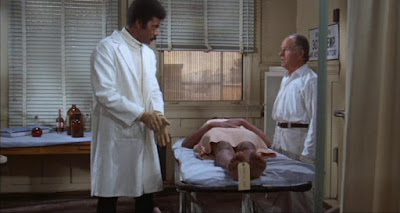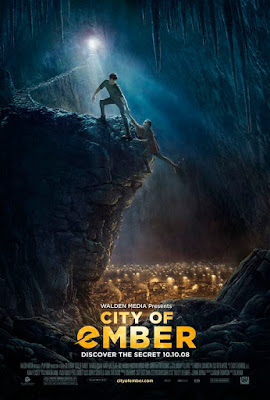(1972) Directed by William Crain; Written by Joan Torres and
Raymond Koenig; Starring: William Marshall, Vonetta McGee, Denise Nicholas,
Thalmus Rasulala and Gordon Pinsent; Available on Blu-ray and DVD
Rating: ***½
“Well, we can’t ignore what the world characterizes as the
black arts, now can we? I think that there’s some truth to all of it.” –
Mamuwalde (William Marshall)
“Tina, this isn’t some nut from a Halloween party, that man
is the real thing.” – Michelle (Denise Nicholas)
I owe a debt of gratitude to the cinematic hosts with the
most, Kristina of Speakeasy,
Ruth of Silver Screenings,
and Karen of Shadows & Satin for organizing the latest iteration of The Great Villain Blogathon.
Be sure to check out the other entries for this massive five-day event. Today’s
post is a 2-for-1 deal of sorts (Who doesn’t like a bargain?). Technically,
Exploitation Month isn’t until next month, but I’m kicking it off a couple of
days early, because the opportunity to discuss the eponymous villain was too
enticing to pass up.
Blacula falls into
the thriving Blaxploitation era of the 1970s, a loose mélange of low-budget
films in multiple genres, focusing on African American characters and urban
settings. It emerged as an answer to cinema dominated by white characters, albeit
often featuring less than flattering portrayals (hence, the exploitation
factor). But many of the films also played with stereotypes, serving as a
platform for social satire. Blacula helped
pave the way for a small but significant wave of black-themed horror films,
including Blackenstein (1973), Abby (1974), and Sugar Hill (1974). But you need to look no further than the
original film for one of the finest villains of the era.
In the film’s prologue, set in Transylvania, circa 1780, Count
Dracula (Charles Macaulay) is host to Mamuwalde (William Marshall), an African
prince, who’s traveled to Eastern Europe to protest the slave trade. Relations
turn sour in a hurry when Dracula offers to purchase Mamuwalde’s wife Luva (Yep,
not only is Dracula a demonic nocturnal bloodsucker, he’s also a flippin’
racist!), played by Vonetta McGee. Naturally, this doesn’t sit very well with
Dracula’s guest, and a fight breaks out. Unfortunately, they’re subdued by
Dracula’s minions, and the vampire count bites Mamuwalde, thus starting his
transformation into one of the undead. Before the transformation is complete,
the sadistic count seals the African prince in a coffin, while his wife is left
to die, locked away in a dungeon.
Nearly 200 years later, a pair of gay interior designers (Nope,
this movie didn’t win any GLAAD awards) end up in Dracula’s castle. Spotting a
potential to make a proverbial killing, they purchase the furnishings for cheap,
along with Mamuwalde’s coffin. The whole lot is shipped back home to a Los
Angeles warehouse, and while the men proceed to catalog the items, the coffin is
opened, inadvertently reviving Mamuwalde (aka: Blacula). Being locked away for
two centuries tends to builds up a powerful thirst, and Mamuwalde makes up for
lost time by draining his two unwitting benefactors and a cabdriver of their
blood. As he enjoys his new-found freedom, he becomes fixated on Tina (also
played by McGee), a woman who happens to be the spitting image of his wife from
yesteryear. He concludes that Tina is Luva, in reincarnated form (similar to
Mina in Bram Stoker’s story).
With his deep voice, commanding stature, and handsome looks,
Marshall rises above the admittedly shaky material, creating a believable,
intimidating presence. An essential element for any good villain is that he must
be relatable on some level, and Mamulwalde is no exception. Although he kills
anyone who stands in the way, there’s a part of me that wanted him to succeed. In
his tragic past, the love of his life was ripped away from him, and all he
wants is to re-establish that bond. Besides, life as a vampire really doesn’t
seem that bad, if you can put up with the atrocious ‘70s fashions.**
* If his voice sounds familiar, you might remember Marshall
from another memorable, but more benign role, as the amiable King of Cartoons
on Pee-wee’s Playhouse.
** Seriously, even he can’t believe the size of this dude’s
collar.
Dr. Gordon Thomas (Thalmus Rasulala) stands in for the Van
Helsing role. He’s a true believer in a world of cynics, fighting the good
fight on his own. After he discovers the same distinctive bite marks on two corpses,
he begins to formulate a hypothesis about who (or what) is perpetrating the
bizarre murders. His biggest hurdle, however, is trying to convince a skeptical
police department and his girlfriend Michelle (Denise Nicholas) that something
supernatural is afoot. Thomas is a formidable opponent to Mamuwalde, and has good
chemistry with Michelle (and I’m not just referring to the fact that they work
together in a lab). In addition to Rasulala’s good supporting performance, classic
movie buffs will appreciate the nice little role by veteran character actor
Elisha Cook, Jr. (sporting a hook hand) as Sam, a county coroner.
Considering the army of the undead Mamuwalde has assembled,
they’re dispatched far too easily. The vampires go up in flames without much
fuss (Then again, it was the ‘70s, when fire-retardant clothing wasn’t much of a
priority). Of course, you’re barking up the wrong tree if you’re looking for a
subtle script or anything that isn’t told in broad strokes, but what Blacula does, it does quite well. If you’re
searching for an entry level film into the wild, weird and wonderful world of
Blaxploitation, or its horror variant, look no further than Blacula, which is elevated, in no small
part, by Marshall, who treats schlock like a Shakespearean tragedy. It’s an
ideal choice for B-movie night. Try it. I think you’ll be surprised. Just tell
‘em Barry sent ya.

























